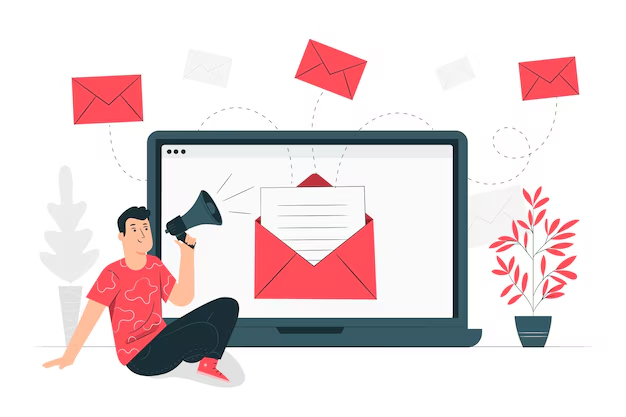Email marketing remains one of the most powerful digital strategies for small businesses, enabling direct communication with potential and existing customers. It helps build strong relationships with potential and existing customers while driving conversions. With the right approach, small businesses can increase engagement, improve customer retention, and generate more revenue. Below, we explore the best marketing strategies that can help businesses maximize their results.
1. Build a High-Quality Email List
A successful email marketing campaign starts with a strong and engaged subscriber list. Instead of purchasing email lists, which can lead to low engagement and high unsubscribe rates, focus on growing your audience organically through these methods:
- Adding sign-up forms to your website to capture interested visitors
- Offering incentives like discounts, exclusive content, or free resources in exchange for email sign-ups
- Encouraging social media followers to subscribe through engaging content and promotions
- Hosting webinars, contests, or giveaways that require an email subscription for participation
A high-quality list ensures that your emails reach people genuinely interested in your business, increasing open rates and conversions.
2. Segment Your Audience for Personalized Email Marketing
Audience segmentation is one of the most effective marketing strategies, as it allows businesses to send personalized and relevant messages. By segmenting your list, you can target different groups of subscribers based on their interests, behavior, and engagement levels. Common segmentation criteria include:
- Demographics: age, gender, and location-based segmentation
- Behavioral data: purchase history, browsing patterns, and engagement levels
- Email activity: active subscribers vs. inactive subscribers
- Customer preferences: Specific interests or product categories they interact with
By tailoring content to different audience segments, businesses can improve engagement, boost open rates, and increase conversions.
3. Craft Engaging and Personalized Email Content
Creating compelling and personalized content is key to a successful email campaign. Here are some best practices:
- Use the recipient’s name in the subject line and email body to make the message feel more personal
- Write clear, concise, and persuasive copy that aligns with the reader’s needs
- Incorporate high-quality images and graphics to enhance the email’s appeal
- Add a strong and clear call-to-action (CTA) to encourage the desired response, such as signing up for an event, making a purchase, or downloading a resource
Engaging content increases the likelihood of subscribers opening and interacting with your emails.
4. Optimize for Mobile Users
A significant percentage of emails are opened on mobile devices, making it essential to optimize your email campaigns for smaller screens. To provide a smooth and user-friendly experience for mobile users, optimize email design for responsiveness and easy navigation:
- Use responsive templates that adjust to different screen sizes
- Keep subject lines short and impactful to grab attention quickly
- Ensure that CTA buttons are large, clear, and easy to tap
- Avoid using large images that might slow down loading times
By optimizing for mobile, businesses can enhance user experience and increase engagement rates.
5. Automate Your Email Marketing Campaigns
Automation allows businesses to send timely and relevant emails without manual intervention. Some essential automation techniques include:
- Welcome email sequences – Send automated welcome messages to new subscribers introducing them to your brand
- Abandoned cart reminders – Remind users to complete their purchase if they leave items in their shopping cart
- Follow-up emails – Engage customers after a purchase with product recommendations or service feedback requests
- Re-engagement campaigns – Reach out to inactive subscribers with special offers or content that may interest them
Automation ensures consistent communication, helping businesses nurture leads and convert them into loyal customers.
6. A/B Test Subject Lines and Email Content
To improve marketing performance, conducting A/B testing is essential. By testing different elements of your campaigns, you can determine what resonates best with your audience. Key elements to test include:
- Subject lines: experiment with different styles, lengths, and tones
- Layouts: Test plain text vs. image-heavy designs
- CTA placement – Determine the best position for buttons to increase clicks
- Sending times identify when your audience is most likely to engage
Continuous testing and optimization help businesses refine their marketing strategies for maximum impact.
7. Maintain a Consistent Email Schedule
Maintaining consistency in your email Marketing schedule helps build trust with your subscribers. However, sending emails too frequently can overwhelm your audience, while infrequent communication can lead to disengagement. To find the right balance:
- Set a consistent schedule, such as weekly, bi-weekly, or monthly
- Monitor analytics to determine the best send times
- Avoid sending too many promotional emails without providing value
A well-planned schedule ensures subscribers stay engaged without feeling bombarded.
8. Monitor Email Marketing Performance Metrics
Tracking key marketing metrics allows businesses to measure success and make data-driven improvements. Some essential metrics to monitor include:
- Open rates: The percentage of recipients who open your email
- Click-through rates (CTR): The number of recipients who clicked on links within the email
- Conversion rates: The percentage of recipients who completed a desired action
- Bounce rates: The number of emails that failed to reach recipients
- Unsubscribe rates: The number of users opting out of future emails
By analyzing these metrics, businesses can adjust their strategies to improve future email marketing campaigns.
9. Web Development and Email Integration
To enhance email marketing efforts, businesses should integrate their email strategy with a well-optimized website. Web development plays a crucial role in this integration by ensuring:
- Fast-loading and mobile-responsive landing pages for email campaigns
- Seamless sign-up forms that encourage visitors to subscribe to email lists
- Secure and user-friendly checkout pages for e-commerce businesses
A well-designed website supports email marketing efforts by providing a seamless user experience and improving conversion rates.
10. Integrate Email Marketing with Other Channels
For a holistic digital marketing approach, integrating email marketing with other channels can enhance engagement. Consider these integration strategies:
- Social Media Promotion: Share newsletters on social media platforms to reach a wider audience
- Retargeting Ads: Use email data to run personalized retargeting campaigns
- Blog and Content Marketing: Embed sign-up forms within blog posts to attract more subscribers
By combining different marketing strategies, businesses can maximize their outreach and improve conversions.
Conclusion
Implementing the right email marketing strategies can help small businesses enhance customer engagement and drive long-term growth. By focusing on segmentation, personalization, automation, and performance analysis, businesses can create highly effective email campaigns. With continuous testing and optimization, small businesses can leverage email marketing to build lasting relationships with their audience and boost revenue.



